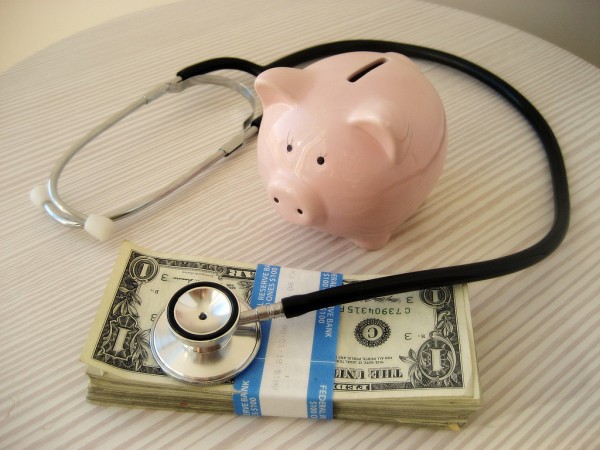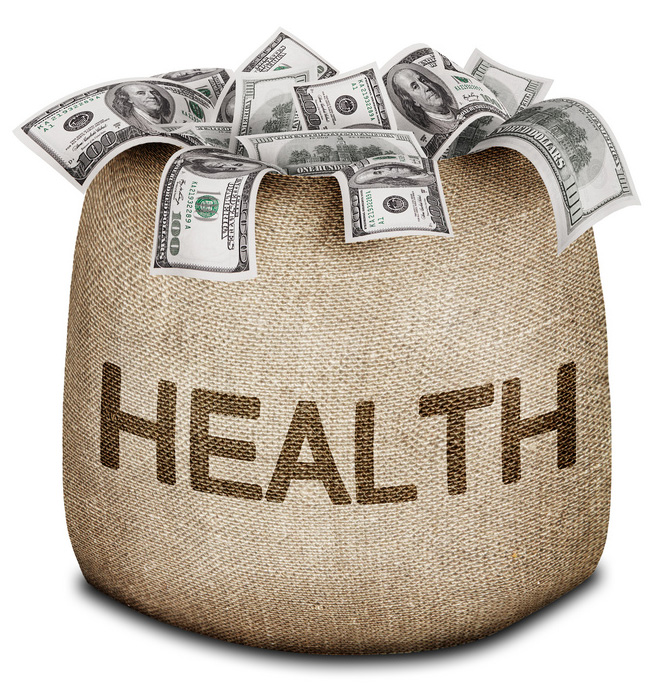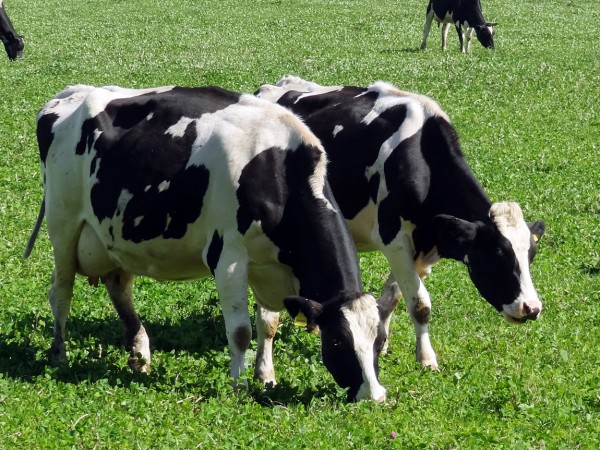 When people think about healthcare in the UK they tend to associate it with the NHS. However, there is a £5 billion private healthcare market. Concerns have been expressed about the lack of effective competition in this sector and it has been investigated by the competition authorities over a 5-year period.
When people think about healthcare in the UK they tend to associate it with the NHS. However, there is a £5 billion private healthcare market. Concerns have been expressed about the lack of effective competition in this sector and it has been investigated by the competition authorities over a 5-year period.
Approximately 4 million people in the UK have a private medical insurance policy. The majority of these are paid for by employers, although some people pay directly. Four companies dominate the health insurance market (AXA PPP, Bupa, Pru Health and Aviva) with a combined market share of over 90%.
Health insurance companies purchase healthcare services for their policy holders from private hospitals. The majority of private hospitals in the UK are owned by the following businesses – BMI, HCA, Nuffield, Ramsey and Spire. Some concerns have been expressed about the lack of competition between private hospitals in some areas of the country.
After its initial analysis into the sector, the Office of Fair Trading (OFT) referred the case to the Competition Commission (CC) in April 2012 to carry out a full market investigation. This process was then taken over by the Competition and Markets Authority (CMA) when it replaced the OFT and CC. The final report was published on April 2nd 2014.
One specific region that was identified in this report as having a lack of effective competition was central London for patients with health insurance. In particular it was concluded that:
|
|
| • |
The market in central London was heavily concentrated and HCA had a dominant market position – its aggregated share of admissions across 16 specialities (e.g. Oncology, Cardiology, Neurology, Dermatology etc.) was 45% to 55%. |
| • |
There were significant barriers to entry including substantial sunk costs. A particular issue for a new entrant or existing business was the problem of securing suitable sites in central London to build new hospitals and in obtaining planning permission. It was pointed out in the report that the market structure in central London had changed very little in the previous 10 years despite a rapidly growing demand for private healthcare. |
| • |
HCA was charging insured patients higher prices for similar treatments than its leading rival – The London Clinic. HCA was also found to be making returns that were in excess of the cost of capital. |
One of the key recommendations of the report was that HCA should be forced to sell–off one or two of the hospitals that it owned in central London to increase the level of competition.
Unsurprisingly HCA was very unhappy with the decision and applied to the Competition Appeal Tribunal (CAT) for a review of the case. During this review, economists working for HCA found errors with the analysis carried out by the CMA into the pricing of health services for insured customers.

In January 2015 the CAT concluded that the findings and recommendations of the report on insured patients in central London should be overturned and the CMA should reconsider the case. In November 2015 the CMA announced that having reviewed the case it had come to a similar set of conclusions: i.e. there was a lack of effective competition and HCA should be forced to sell off two of its hospitals in London.
HCA still claimed that the pricing analysis was incorrect because it did not fully take into account that HCA treated patients with more complex conditions than TLC and that was why their prices were higher.
On March 22nd 2016 the CMA announced that it had reversed its ruling and HCA would no longer be expected to sell off any of its hospitals. The reason given for this change in recommendation was the appearance of new entrants into the market. For example, Cleveland Clinic a US-based private healthcare provider has purchased a long-term lease on a property in Belgravia, central London. It plans to convert the office space into a private hospital with 2015 beds.
A spokesperson for Bupa commented that:
“The CMA has confirmed again that there isn’t enough competition in central London, with HCA dominating the private hospital market and charging higher prices. We ask the CMA to act now to address this gap.”
It will be interesting to see the impact these new entrants have on the market in the future.
Articles
London develops as a global healthcare hub Financial Times Gill Plimmer (31/01/16)
Competition watchdog reverses ruling on private hospitals Financial Times Gill Plimmer, (22/03/16)
CMA’s private healthcare provisional decision on remedies CMA 22/03/16
Competition problems provisionally found in private healthcare CMA 10/11/15
CMA welcomes Court of Appeal verdict in private healthcare case CMA 21/05/15
Questions
- Define sunk costs using some real-world examples.
- Why might the existence of sunk costs create a barrier to entry?
- Draw a diagram to illustrate why a profit-maximising business with significant market power might charge higher prices than one in a very competitive environment.
- What is the cost of capital? Explain why returns that are greater than the cost of capital might be evidence that a firm is making excessive profits.
- Draw a diagram to illustrate the impact of new entrants in a market.
 ‘Farm-gate’ milk prices (the price paid to farmers) have been rising in the UK. In July they reached a record high of 31.4p per litre (ppl). This was 5.1ppl higher than in July 2012. There were further price rises this month (October). Sainsbury’s increased the price it pays farmers by nearly 2ppl to 34.15ppl and Arla Foods by 1.5ppl to 33.13ppl. Muller Wiseman is set to raise the price it pays to 32.5p per litre.
‘Farm-gate’ milk prices (the price paid to farmers) have been rising in the UK. In July they reached a record high of 31.4p per litre (ppl). This was 5.1ppl higher than in July 2012. There were further price rises this month (October). Sainsbury’s increased the price it pays farmers by nearly 2ppl to 34.15ppl and Arla Foods by 1.5ppl to 33.13ppl. Muller Wiseman is set to raise the price it pays to 32.5p per litre.
And yet many farmers are struggling to make a profit from milk production, claiming that their costs have risen faster than the prices they receive. Feed costs, for example, have risen by 2.12ppl. On average, farmers would need over 38p per litre just to cover their average variable costs. What is more, exceptional weather has reduced yields per cow by some 7%.
Meanwhile, in the USA, supply has risen by some 1.3% compared with a year ago. But despite this, the prices of dairy products are rising, thanks to strong demand. Cheese and butter prices, in particular, are rising rapidly, partly because of high demand from overseas. Demand for imported dairy products is particularly high in China, where supply has fallen by some 6% in the past couple of months.
 The problem for dairy farmers in the UK is partly one of the power balance in the industry. Farmers have little or no market power. Supermarkets, however, have considerable market power. As large oligopsonistic buyers, they can put downward pressure on the prices paid to their suppliers. These are mainly large processing firms, such as Robert Wiseman Dairies, Arla Foods and Dairy Crest. They, in turn, can use their market power to keep down the price they pay to farmers.
The problem for dairy farmers in the UK is partly one of the power balance in the industry. Farmers have little or no market power. Supermarkets, however, have considerable market power. As large oligopsonistic buyers, they can put downward pressure on the prices paid to their suppliers. These are mainly large processing firms, such as Robert Wiseman Dairies, Arla Foods and Dairy Crest. They, in turn, can use their market power to keep down the price they pay to farmers.
Articles
Dairy farmers renew protests over milk prices Farmers Weekly, Philip Case (5/9/13)
Dairy farmers ‘lost more than 1p/litre last year’ Farmers Weekly, Philip Case (2/10/13)
South West farming businesses and producers still making a loss on milk South West Business (3/10/13)
Q&A: Milk prices row and how the system works BBC News (23/7/12) (note date of this)
Positive Dairy Trend: Rising Milk Production and Strong Demand The Farmer’s Exchange, Lee Mielke (27/9/13)
Chinese supply crisis to delay dairy price adjustment Rabobank (25/9/13)
China milk ‘crisis’ fuels world dairy price rise Agrimoney (1/10/13)
Data
UK milk prices and composition of milk ONS
Combined IFCN world milk price indicator IFCN
Questions
- Give some examples of (a) variable costs and (b) fixed costs in milk production.
- Why may farmers continue in dairy production, at least for a time, even if they are not covering their average variable costs?
- What factors determine (a) the price of milk paid to farmers; (b) the retail price in supermarkets?
- Explain how dairy futures markets work.
- Could the milk processors use their market power in the interests of farmers? Is it in the interests of milk processors to do so?
- Why is there a Chinese “dairy supply crisis”? What is its impact on the rest of the world? What is the relevance of the price elasticity of demand for dairy products in China to this impact?
 In the models of perfect and monopolistic competition, the long-run equilibrium involves firms making zero supernormal profit. The key assumption driving this outcome is that supernormal profits in the short run attract new entrants to the market.
In the models of perfect and monopolistic competition, the long-run equilibrium involves firms making zero supernormal profit. The key assumption driving this outcome is that supernormal profits in the short run attract new entrants to the market.
Increased competition then results in lower prices for consumers and firms’ profits fall. Therefore, an important question is how long does it take for this process to take place?
In a recent post on the Freakonomics blog, Daniel Hamermesh describes a situation in which he was actually able to observe this adjustment process taking place amongst buskers in the centre of Madrid.
This interesting example illustrates that, at least in some cases, this process can start even before entry occurs. This is because incumbents are able to make adjustments to their existing strategies, in the case of the buskers by changing their location. Consequently, profitable opportunities start to be eroded away very quickly.
Perfect competition Chillin’Competition blog, (24/10/11)
Questions
- What are the assumptions of the model of monopolistic competition?
- What is the difference between monopolistic and perfect competition?
- Does the market for buskers fit well with the assumptions of monopolistic competition?
- In this market what might be the benefits for consumers of increased competition?
- What are the key strategies incumbents might use in this market?
- How long do you think entry might take in this market?
The recession of the past few months has taken its toll on organic farmers. Until recently, the industry was booming as consumers switched to products perceived as greener, healthier and more ethically produced. Now, as many consumers are feeling the pinch, they are switching to cheaper foodstuffs. The resulting decline in demand for organic food has turned profit into loss for many organic farmers. According to the first of the linked articles below, at least two organic farmers are leaving the movement each week.
But what will happen as the economy recovers and people start turning back to organic products? Given that it takes some two years to convert to organic standards, there could be supply shortages next year.
As UK shoppers tighten their belts, organic farmers feel the squeeze Guardian (11/4/09)
United Kingdom-Organic slowdown Farming UK (12/4/09)
Can the organics survive the current economy? Limerick Post (10/4/09)
Questions
- How close to perfect competition is the market for organic foods?
- What determines whether an organic farmer should continue in the market even though a loss is being made?
- What can you conclude about the income and price elasticities of demand for organic produce and the cross-price elasticity of demand for organic food with eating out?
- What is likely to happen to the market for organic food over the next two years?
 When people think about healthcare in the UK they tend to associate it with the NHS. However, there is a £5 billion private healthcare market. Concerns have been expressed about the lack of effective competition in this sector and it has been investigated by the competition authorities over a 5-year period.
When people think about healthcare in the UK they tend to associate it with the NHS. However, there is a £5 billion private healthcare market. Concerns have been expressed about the lack of effective competition in this sector and it has been investigated by the competition authorities over a 5-year period.


